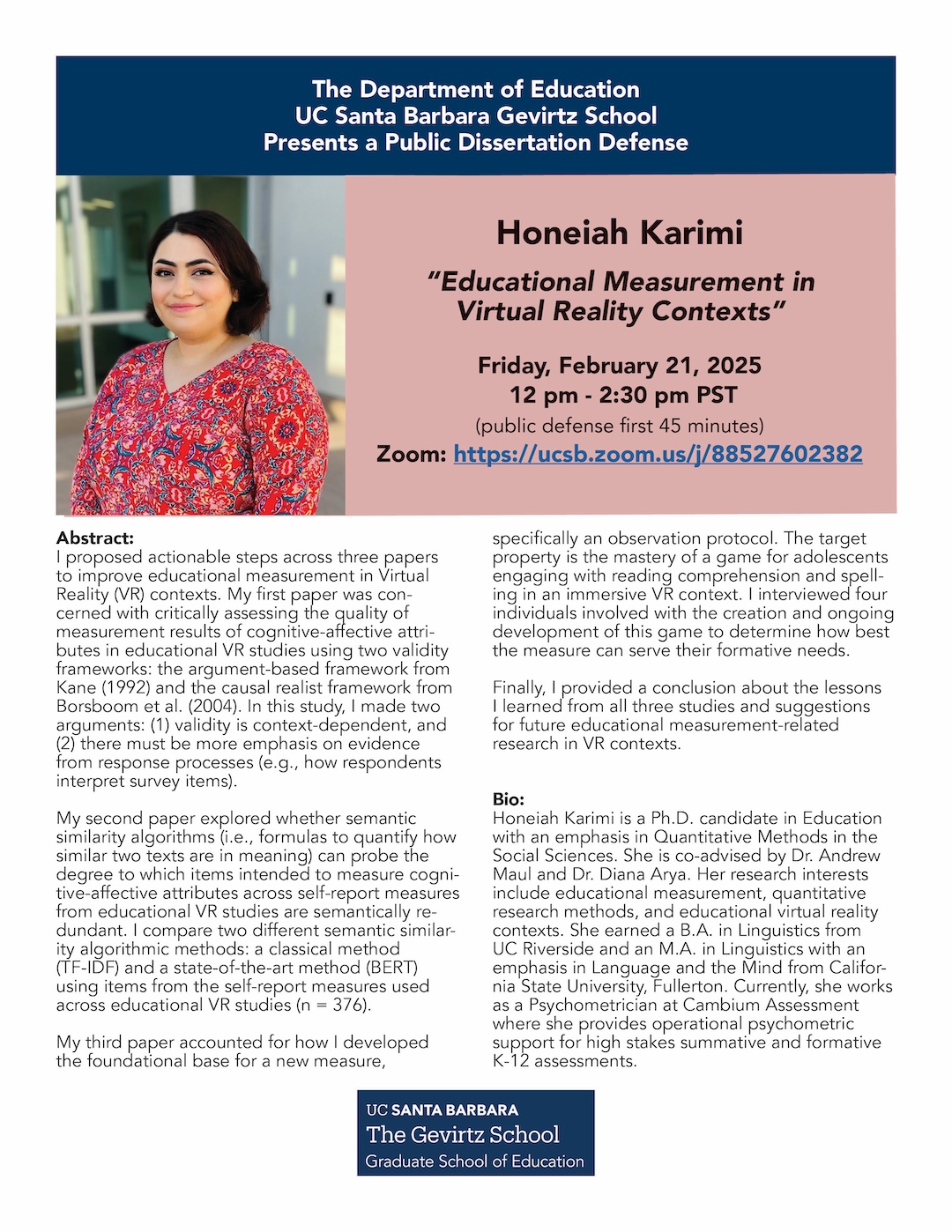Honeiah Karimi is a Ph.D. candidate in Education with an emphasis in Quantitative Methods in the Social Sciences. She is co-advised by Dr. Andrew Maul and Dr. Diana Arya. Her research interests include educational measurement, quantitative research methods, and educational virtual reality contexts. She earned a B.A. in Linguistics from UC Riverside and an M.A. in Linguistics with an emphasis in Language and the Mind from California State University, Fullerton. Currently, she works as a Psychometrician at Cambium Assessment where she provides operational psychometric support for high stakes summative and formative K-12 assessments.
Dissertation Title: “Educational Measurement in Virtual Reality Contexts”
GGSE: What is some practical advice that you’d give to teachers or early-career researchers interested in combining educational research with emerging technologies like Virtual Reality (VR) and Artificial Intelligence (AI)?
Honeiah: VR can provide compelling applications in educational contexts to supplement traditional lectures, but it is important to be cautious about claims like the following: (1) VR is “better” for learning, (2) it is a viable replacement to traditional lectures, or (3) it can revolutionize education. Additionally, I would be mindful of issues surrounding potential motion sickness and technological issues that could occur. VR may not always be the most efficient tool, but it can still be a tool for unique learning opportunities.
GGSE: One of your key arguments is that validity is context-dependent in VR education. Can you share an example from your research where this principle made a significant difference in interpreting results?
Honeiah: When researchers form a hypothesis around a cognitive-affective attribute’s structure, dimensionality, and item responses, they can make more informed, context-specific decisions on the most appropriate method of psychometric modeling (Borsboom, 2006). For example, in a study by Makransky et al. (2017), they found that a multidimensional model had an overall better fit for their presence (i.e., the psychological state of "being there") questionnaire items when compared to the unidimensional model; thus, they argue that presence is likely a multidimensional property, which is consistent with the literature on presence (e.g., Lee et al., 2010). When there is a cohesion between these two aspects of measurement, it becomes easier later to provide theory-based explanations as to why certain choices were made when it comes to instrument development or psychometric modeling.
Interview by: Ashley Habchi
